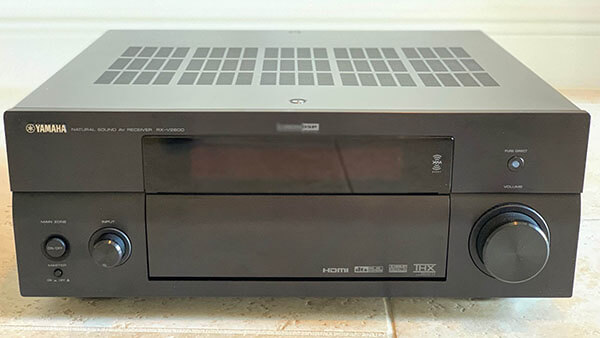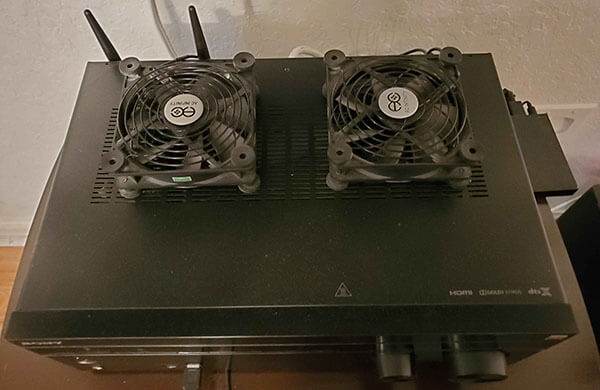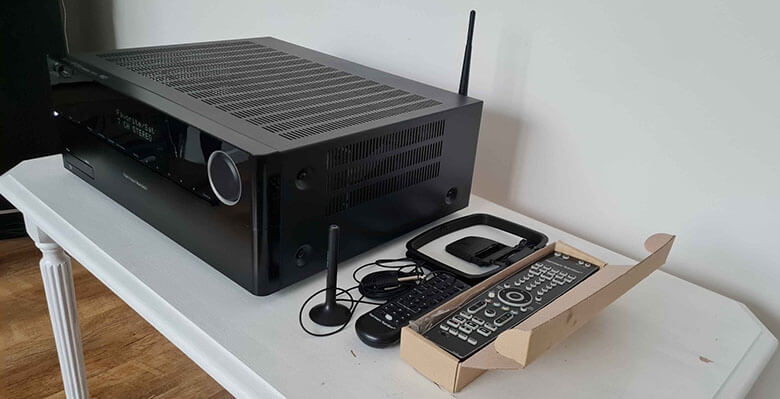My new Yamaha RX V677 was working perfectly. A few days ago, I noticed that it was overheating. While you turn up the volume for using it, it gets extremely hot! When I touch the top and sides of the receiver, I feel that abnormal heat! Terrible, isn’t it? I shut it off and did some research.
Finally, I could fix this problem myself. And in this article, I will be sharing all these possible solutions to prevent your receiver from overheating. So if you are facing the same problem as mine, I suggest you look forward to this article to get all the solutions in just one piece.
Why Does My Yamaha Receiver Keep Overheating?

Even though most electronic devices have a built-in safety system to protect them from damage due to overheating. This safety system enables the devices to shut off automatically before they reach the peak of damage. Before you jump to solutions, I’d like you to know the reasons for which your receiver keeps overheating.
One of the main reasons your receiver starts to overheat is due to the lack of proper ventilation. When there is not enough arrangement for ventilating, the receiver starts overheating. If you place your receiver in a congested place, it will not have enough space to draw out the air from inside. And thereby, it gets overheated. Other reasons include:
- When you turn up the volume and keep it running like that for a long time.
- When you stack your audio/video equipment on top of each other. For example, when you place a game console or cable box right on top of your receiver.
- Dirt or debris also could result in overheating.
Try Out This Instant Solution!
When you get clueless as to why your receiver keeps overheating, try this instant solution.
- Just turn OFF your receiver if it starts to overheat.
- Make sure you turn OFF the wireless connectivity options as well.
- Carefully place it in a different place with plenty of space around- particularly on the top and the sides.
- Wait for some time and let it cool down.
- Now turn it ON and check whether the overheating tends to continue.
How To Prevent Overheating Problems On AV Receiver

Don’t be afraid or panic when your receiver gets overheated. Just make sure to diagnose and look for solutions before it gets too late. Otherwise, your receiver might damage for good.
Here I am gonna share a few mind-blowing tricks that will help you to get rid of overheating problems.
1. Make Sure That There Is Enough Ventilation
The first and foremost reason why your receiver starts overheating could be due to inadequate ventilation. So you must make sure not to place your receiver in a closed space.
Rather it should be kept in an open place to ensure enough air circulation. Moreover, inadequate ventilation also hinders the overall performance and longevity of your receiver.
2. Don’t Stuff The Electronics
You could be having a number of electronic equipment for your home. That’s never a problem unless you stuff them with each other. Or place one on top of another.
I would always recommend you to keep your electronic equipment at a safer distance from each other. That is you must keep a few inches of space around your equipment for cooling and ventilating effect.
In the same way, the top surface of your component should also be open and free. If you place one component on top of another, it fails to ventilate and thereby starts overheating.
3. Avoid Direct Sunlight As Well As Other Heat Sources
This is yet another simple and important tip to protect your receiver from overheating. Direct sunlight is never good for your electronic devices no matter what.
So you need to check if your receiver is facing direct sunlight. If so, you gotta move it and place it somewhere that does not allow direct sunlight.
Similarly, different heat sources could also pose a threat to your receiver. For example, baseboard heaters, home and kitchen appliances, space heaters, radiators, and so on can be the heat sources troubling your receiver. So make sure, you protect your receiver from these as well.
4. Always Follow Owner’s/Manufacturer’s Manual
For positioning electronic equipment, let’s say a receiver, you must go through the manufacturer/owner’s manual. That is because you get a perfect positioning explanation in the manual. Usually, the top surface of the receiver is for ventilation purposes. It lets the hot air flow out and allows the cool air to get inside.
If you do not place it according to the manual, your receiver fails to ventilate and starts overheating. Because the hot air inside gets jammed and does not have any space to move outside. So I always suggest positioning/arranging your receiver just how the manual states.
5. Don’t Place Your Receiver In A Confined Space
If you are willing to place your receiver in a home or entertainment cabinet, make sure that it is not in a closed and confined space. Otherwise, the temperature will rise and the receiver will get overheated.
Cabinets or closets usually do not have enough space. And closed cabinets are always a NO. Still, if you prefer using a cabinet make sure it is open and allows enough space, particularly on the top and the sides of your receiver. This is a MUST for ensuring proper ventilation and airflow.
However, if you have no option/space left, try installing an exhaust vent with an in-line fan for cooling purposes.
6. A Ventilation Fan
This is by far the best solution to avoid overheating problems instantly. Ventilation fans allow more air for your receiver to actively cool down. The more air it gets, the more it remains ventilated.
Additionally, ventilation fans also help in driving the efficiency of your electronic devices and gadgets. When you place a ventilation fan on the top of your receiver, it drives out the hot air coming from inside the receiver.
Another one at the bottom of your receiver helps to pull cool air right into it. Thus ventilation and cooling happen simultaneously and all your worries come to an end!
If you are willing to install exhaust fans for providing enough ventilation and cooling, then you can try laptop/PC fans. Rather than an equipment fan or an amp fan, these are comparatively cheap and easy to use. These fans illuminate and force the air from the receiver unit
- Use a laptop fan that covers most of the surface of your Yamaha receiver.
- Make sure that the fan covers the entire width of the receiver (in most cases, it is 17’’)
- You can also flip and use it. If you flip it, it will start blowing cool air directly to the unit instead of forcing it out from the unit.
- Right under this laptop fan, you’d get vents to eliminate the air coming from the fans. You just need to regulate the jog wheel and maintain the level/speed of the fans.
Tip: These fans won’t be loud while rotating. So they won’t be noisy and annoying. However, if your ventilation fans make an annoying sound, you can mount them at the end farthest from your receiver.
7. Make Sure Your Receiver Is Dust-Free
Dust and debris also prevent the receiver from ventilating. If your receiver has dust inside or in the vents, it hinders the air from flowing outside. Thereby, the receiver keeps overheating.
I would always recommend checking and cleaning your receiver once a month to avoid this kinda situation. Because electronic devices are prone to dirt and dust when not cleaned regularly. Besides, dust also deteriorates the efficiency of your receiver.
For cleaning purposes, start with checking the interior of the receiver via its vents. Also, check the slots. Use a small vacuum to suck out the dust from the receiver. You can also blow some compressed air to clean the dust at once.
Make sure to clean the vents and ventilation fans as well. After this, you can dampen a micro-fiber cloth (to avoid scratching) and use some mild soap to clean the exterior of your receiver.
If your manual allows you to open up the receiver, you can open it up carefully and check inside thoroughly.
8. Don’t Set The Volume Too High
In some cases, it is seen that when you set the volume too high for a longer time, your receiver starts overheating. Setting up the volume too high often gets overloaded. Thereby, it forces the receiver to shut down itself.
This is when the receiver fails to handle the overheating procedure. Soon, the protection circuit expects an alert and warns you. Otherwise, the electronic equipment, as well as power supply components, might damage permanently.
Yet if you want loud music or want to watch a movie with the loudest sound, get yourself an external amp. You can also use some highly powerful speakers to back up your sound quality.
I would recommend not to keep it functioning continuously for a longer time. Instead, take some intervals while allowing it to rest and cool down. This excellently helps in getting rid of overheating problems.
10. Speaker Connections
Sometimes, loose speaker connections also lead to overheating issues. In such cases, you need to inspect all the wires and the screws. Make sure to check the speaker connections as well.
There should be no copper wires dropping out. And all the wiring of the receiver as well as the speaker should be secure.
If they tend to get loose, unplug and reconnect them tightly while the receiver is OFF. Now turn it back ON and check whether the problem continues or not.
Frequently Asked Questions
Now comes the FAQ section where I will be discussing some common queries concerning this overheating issue.
Is it normal for a stereo receiver to get hot?
It is normal but makes sure the situation does not go overboard. All you need to make sure that your receiver is getting enough ventilation to let the hot air flow outside of it.
How hot should my AV Receiver be?
A little overheating wouldn’t cause you trouble. But you need to ensure that this overheating does not go beyond 85 degrees F. Otherwise, it will damage the internal components due to overheating. Moreover, it will decrease the lifetime and efficiency of your receiver.
Final Words
I believe my article on Yamaha receiver overheating would help you to diagnose overheating problems and solve them asap. If you have tried the following steps and still couldn’t get rid of overheating issues, kindly take it to a repair shop and let the professionals help you out instantly.

